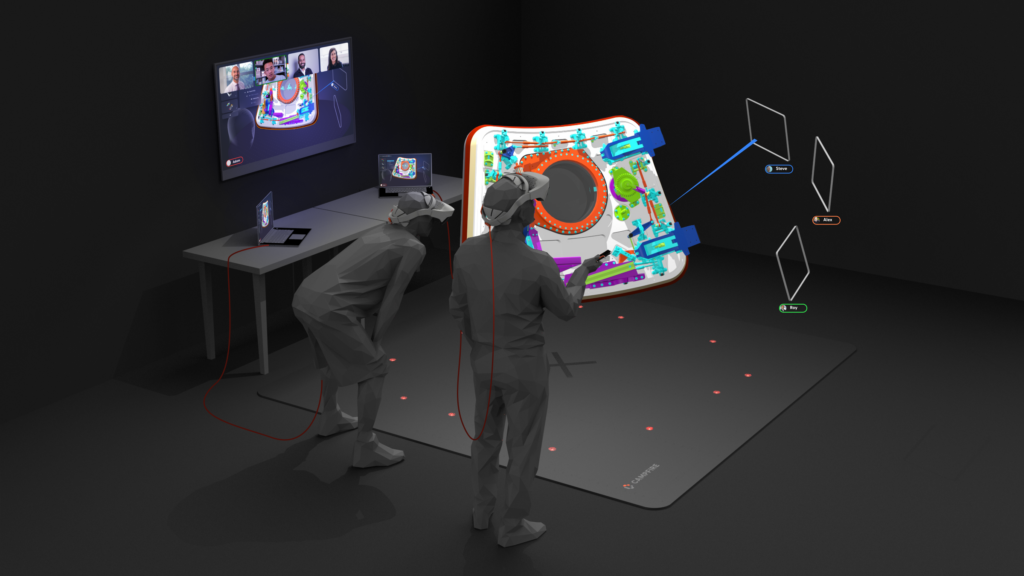Collaborating with teammates in a virtual space is as easy as opening a Google Doc.
We’ve seen our fair share of remote collaboration tools powered by immersive technology over the past few years, from Horizon Workrooms, Meta’s virtual coworking platform for Quest headsets, to Spatial’s augmented reality (AR) holograms. Today, we learned of a new AR-powered coworking platform available now to businesses and teams, the Campfire holographic collaboration system.
Accessible on a variety of devices, from iPads, Macs, and PCs to a specialized XR headset, this cross-platform app allows team members to collaborate on a variety of different projects regardless of their physical locations. The system includes a number of useful tools for working in a 3D space, from a digital laser pointer to various note-taking capabilities.
“Enterprise XR has been a fragmented mess of point solutions that fail to scale for lack of usability and utility. We designed Campfire to solve a basic human challenge that XR technology uniquely solves – the difficulty of communicating 3D information. We’ve made it easier than ever, and are proud to bring it to market,” said Jay Wright, CEO and co-founder of Campfire.
Ease is the name of the game when it comes to Campfire. According to the team, accessing the system is as easy as opening a Google Doc. Only instead of a standard 2D document, multiple team members can work together in an immersive virtual space featuring over 40 different types of 3D models and scans they can share as standard links.
I had the opportunity to sit in on a demo with the Campfire team, during which they demonstrated the system’s wide range of capabilities. One member joined us remotely using an iPad while another accessed the platform using the Campfire headset, a high-fidelity plug-and-play AR device powered by a PC and controlled using an iPhone. According to the team, the headset features a field-of-view four times the size of the Magic Leap 2.
Each team member appeared in the virtual workspace as a holographic avatar. Throughout the demo, they imported various 3D models into the scene and left detailed comments using the aforementioned note-taking tools. As demonstrated by the team, Campfire can serve a variety of use cases, from engineering and design to training and instruction.
What impressed me most was the accessibility of the platform. Users were able to jump in and out of the virtual workspace with relative ease using their respective devices. Users on PC can navigate the interface using a standard keyboard and mouse while those on iPad and Campfire headsets can physically move around the scene in AR.
According to Campfire, hundreds of companies have applied for the Early Access Program. This includes industries ranging from aerospace and medicine to automotive, apparel, and retail.
“We’ve been looking at AR and VR for 15 years because the potential productivity gains and cost savings are so great,” added Ryan Wheeler, Senior Fellow of Advanced Visualizations at Collins Aerospace. “We engaged with Campfire because it’s hands down the easiest-to-use solution I’ve seen and the best visual experience in a headset. Campfire opens the door to a much broader set of use cases that we couldn’t previously address.”
Those interested in leveraging the power of Campfire can pick up the Campsite Starter Kit for $15,000 per year in the US, UK, and EU. This package includes two Campfire Headsets/Packs/Consoles (Pioneer Edition), five enterprise user licenses, and one Studio Console.
For more information visit campfire3d.com.
Feature Image Credit: Campfire
The post Campfire Unveils Its Holographic Collaboration System appeared first on VRScout.







